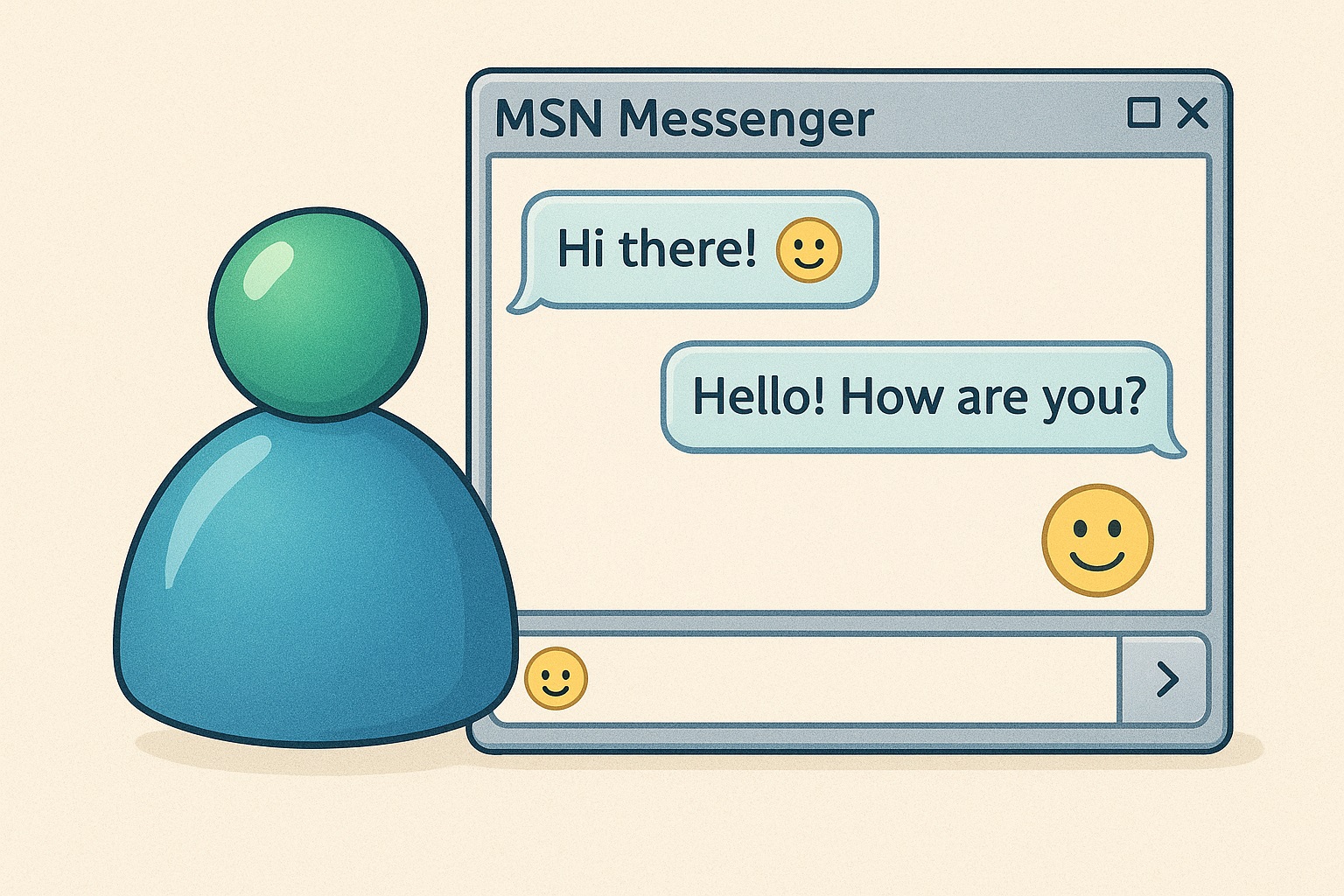Long before social media feeds and mobile messengers became part of everyday life, there was a time when chatting online felt new, personal, and exciting. For many, that feeling came from MSN Messenger, Microsoft’s simple yet iconic instant messaging app that ruled the early 2000s.
I’ll be honest — I didn’t use MSN Messenger much myself. Where I lived, Yahoo Messenger was more common. But MSN was everywhere too, and even if you weren’t using it, you definitely knew someone who was. It was a big part of that early internet culture — clean, friendly, and surprisingly advanced for its time.
Simple Beginnings, Big Impact
Launched in 1999, MSN Messenger (later called Windows Live Messenger) quickly became one of the most popular communication tools of its time. All you needed was a Hotmail address, and you could instantly message anyone on your contact list.
The interface was straightforward — a clean window, your buddy list on the left, and a chat box on the right. You could see when your friends were online, set your status (“Available,” “Busy,” or “Away”), and customize your display name with fun symbols or colors.
For the early 2000s generation, MSN Messenger was more than just software — it was where friendships grew stronger and where people spent hours after school or work, chatting about everything and nothing at the same time.
Features Everyone Remembered
One of MSN Messenger’s most iconic features was the “nudge.” If your friend wasn’t replying, you could send a nudge that shook their chat window — a playful way of saying, “Hey, I’m here!” There were also emoticons, custom sounds, profile pictures, and status messages that reflected your mood or favorite song lyrics.
Later versions even allowed voice and video chats, file sharing, and integration with Xbox and Outlook, making it a versatile tool long before unified messaging became common.
The End of an Era
By the early 2010s, new platforms like Facebook Chat, WhatsApp, and Skype began to take over. Microsoft eventually merged MSN Messenger with Skype in 2013, officially ending an era of simple, desktop-based chatting.
Even though I didn’t use it much, I can see why so many people remember it fondly. It wasn’t just another app — it was a part of growing up online, making friends, and discovering what it meant to stay connected in a digital world.
Why It’s Still Remembered Fondly
MSN Messenger reminds us of a time when online communication felt genuine — when you logged in just to talk, not to scroll. It was simple, personal, and filled with character.
Today, it lives on in digital nostalgia, alongside Yahoo Messenger, Orkut, and other icons of that era. Even if you didn’t use it much, it’s hard not to appreciate what it stood for — the excitement of the early internet and the friendships that grew through a glowing chat window.

